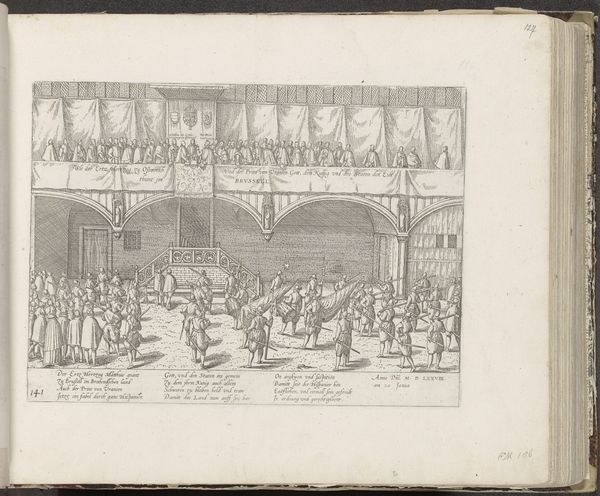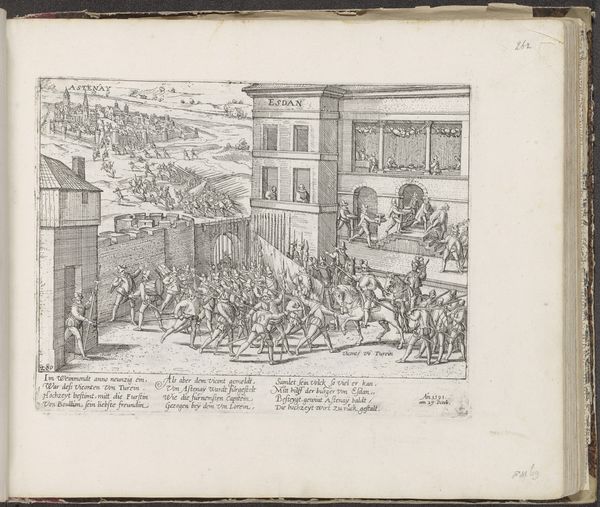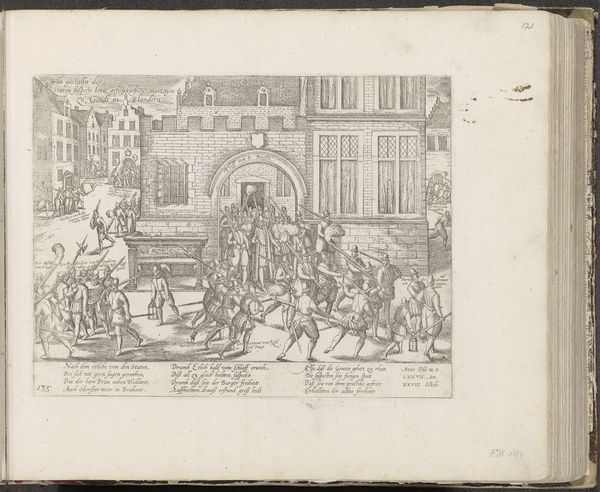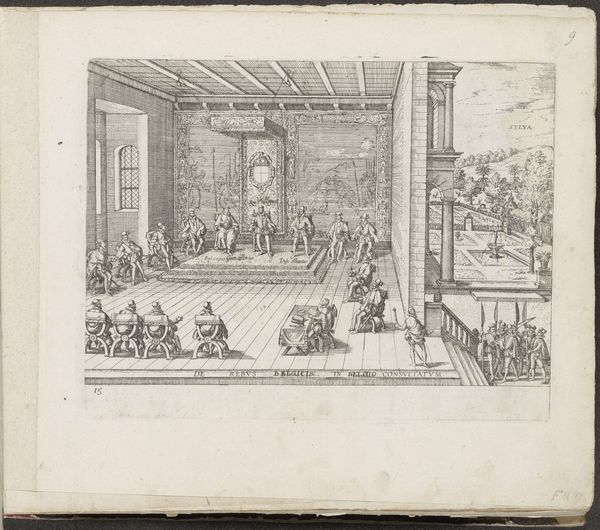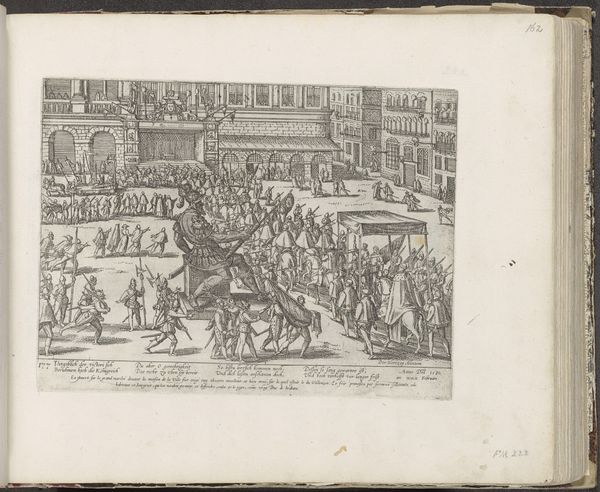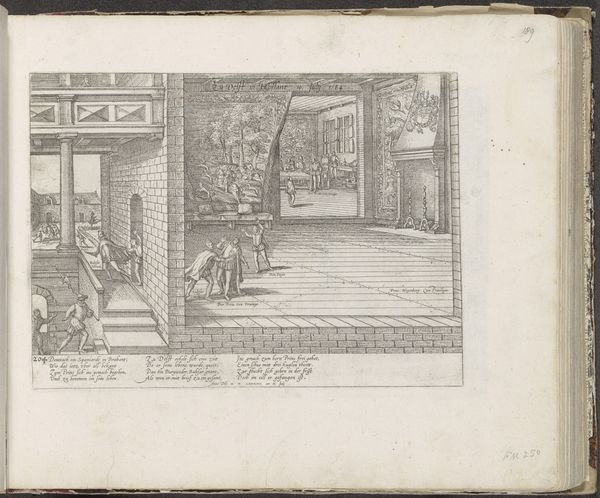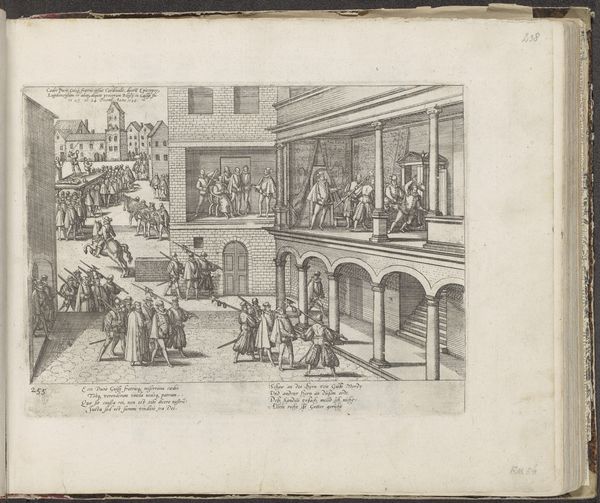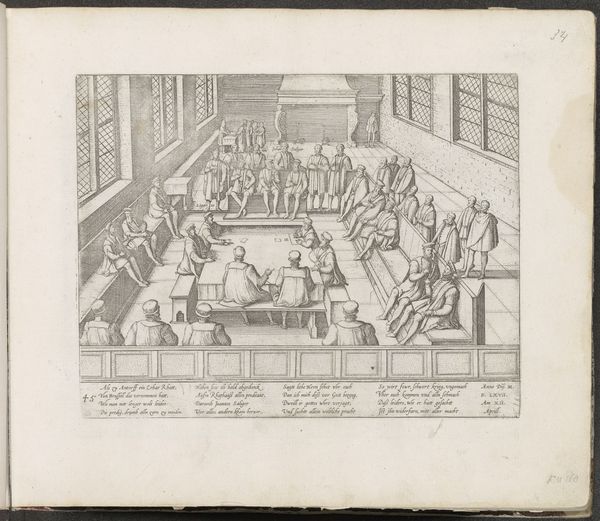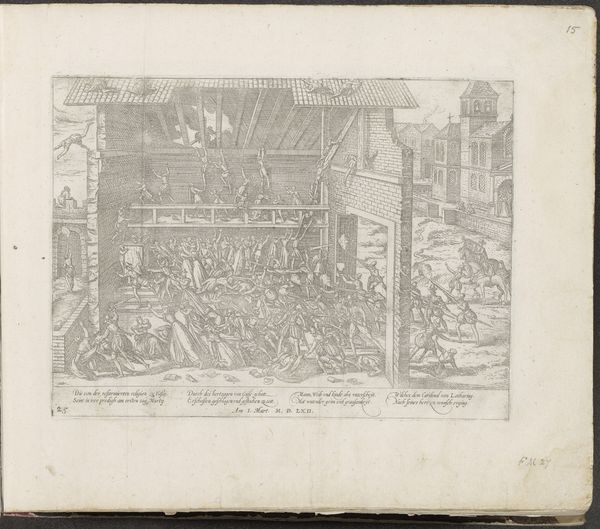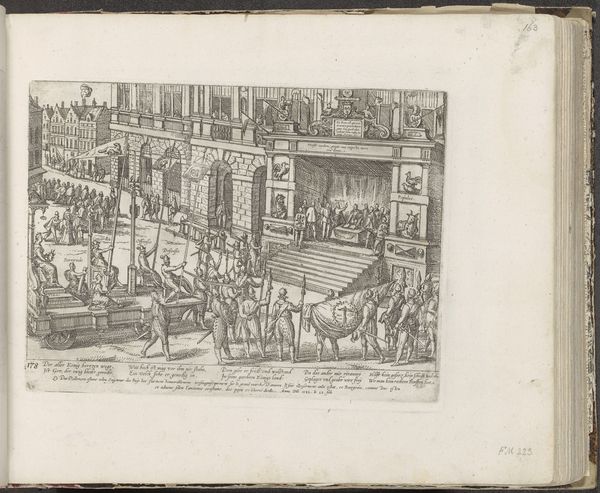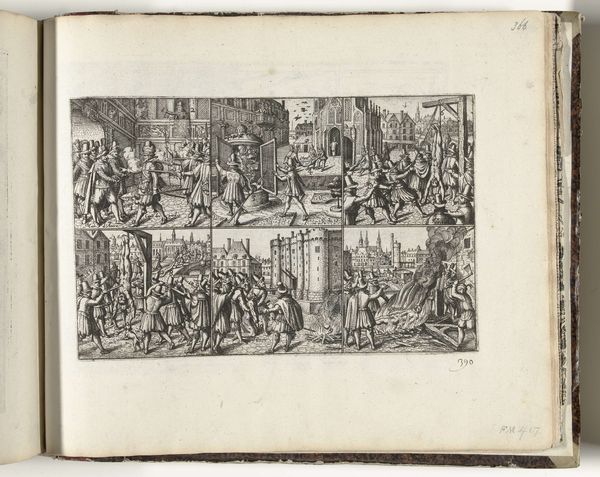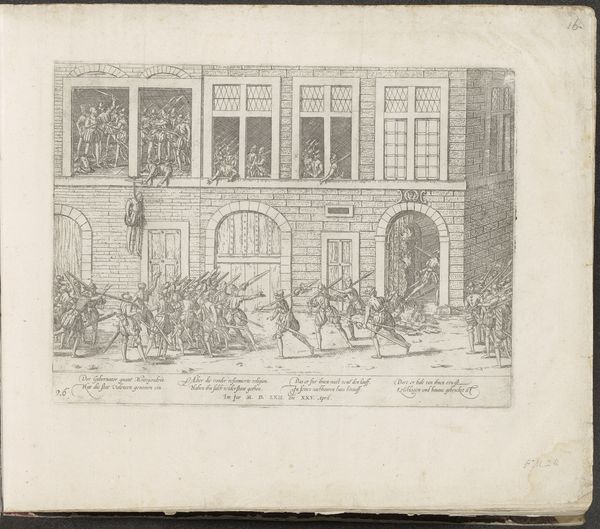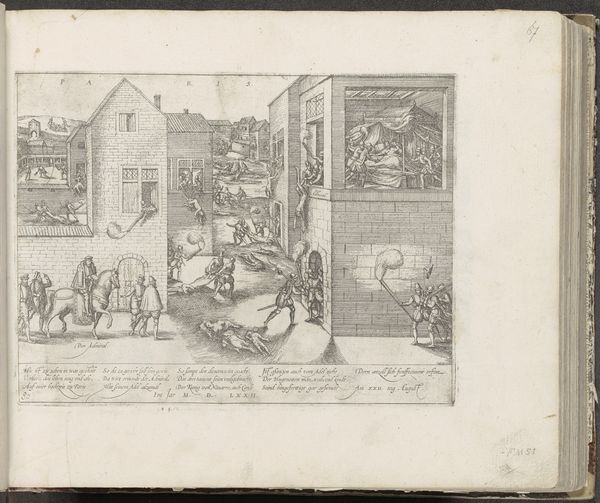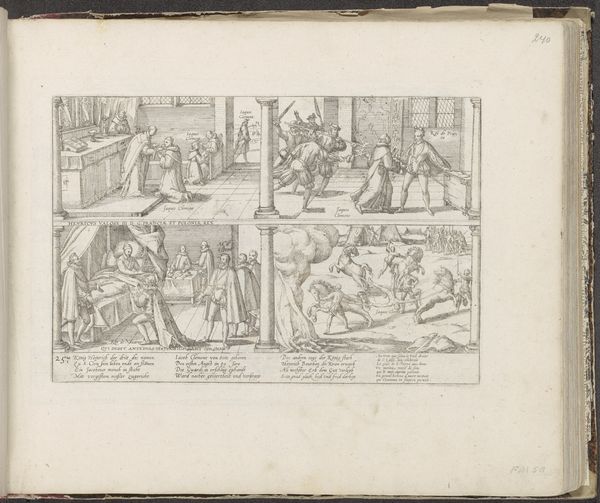
Aanslag door Jean de Jauregui op Willem van Oranje, 1582 c. 1582 - 1585
0:00
0:00
print, engraving
#
aged paper
#
toned paper
#
medieval
#
narrative-art
# print
#
pen sketch
#
sketch book
#
figuration
#
personal sketchbook
#
ink drawing experimentation
#
pen-ink sketch
#
line
#
pen work
#
sketchbook drawing
#
history-painting
#
sketchbook art
#
engraving
Dimensions: height 202 mm, width 274 mm
Copyright: Rijks Museum: Open Domain
Editor: This print, "Aanslag door Jean de Jauregui op Willem van Oranje, 1582" by Frans Hogenberg, around 1582 to 1585, held here at the Rijksmuseum, is striking. The composition feels incredibly dynamic, full of implied movement despite being a static image. What historical narratives do you see embedded in these lines? Curator: What immediately grabs me is the carefully constructed symbolism of conflict. Consider the placement of William of Orange. He is not merely a victim, but a figure positioned symbolically, almost at the center but set back, raised. Hogenberg utilizes the space to evoke a sense of a rupture in social order, of something deeply sacred being violated. Do you see how the objects surrounding William create layers of meanings? Editor: I see the table there—but I’m unsure what meanings they might be creating. Are you suggesting they hold a significance beyond being props in this scene? Curator: Precisely. That table isn't merely a surface. Tables throughout art history often symbolize gatherings, laws, or pacts. Here, disrupted amidst violence, it reflects a shattered social contract, doesn't it? It speaks volumes about the instability and fractured alliances during that era. Reflect also upon the clothing. Editor: That makes perfect sense! And, now that you mention it, the clothing seems quite deliberately depicted. How does the specific attire add to the narrative, and what can we read from that? Curator: Observe the contrast. William, attired in a style signifying leadership and authority, becomes a target. Whereas the conflicting men are similarly, but differently, clad. This serves not just as documentation, but highlights an intention to underscore an intended, yet perhaps veiled, division in social strata, suggesting a subversion of societal norms. Editor: That’s a compelling interpretation. I never would have noticed so much without considering the symbolic weight Hogenberg gives to even mundane items. I’ll definitely be looking at prints with different eyes now, wondering about the cultural echoes embedded within.
Comments
No comments
Be the first to comment and join the conversation on the ultimate creative platform.
